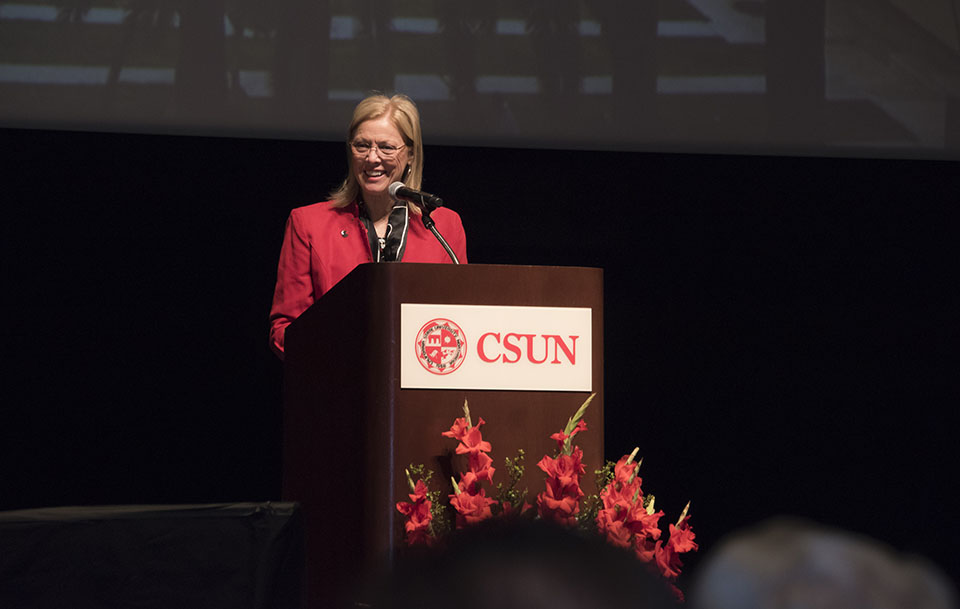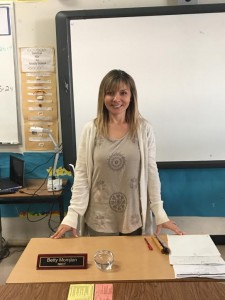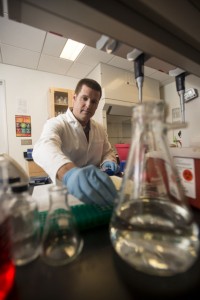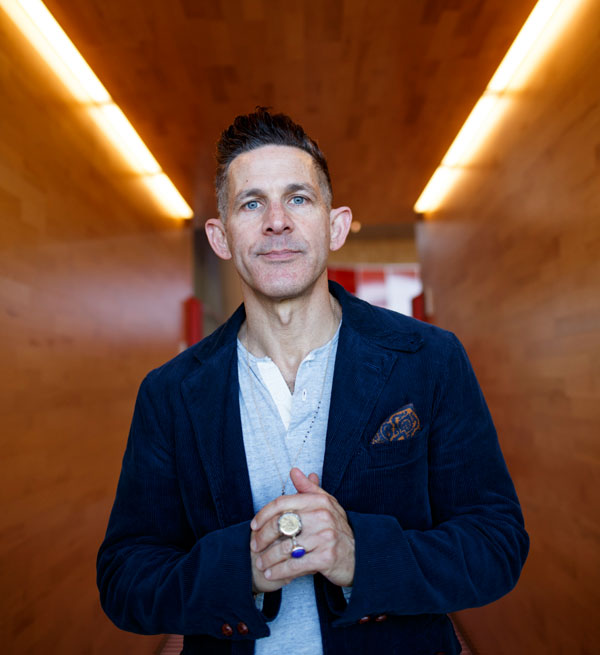
It’s Monday morning. Students are hustling to get to their classes, chatting quietly, dark circles under their eyes and coffee cups in hand, trying to make it to an 8 a.m. class. They hear the majestic notes of the carillon ring out across campus, and poof! The students disappear into campus buildings, trailing the aroma of coffee behind them.
For more than 50 years, the California State University, Northridge carillon has played several important roles in supporting the campus community and setting the academic mood at the university. But these beloved “bells” hold a secret: They’re not hanging in a campanile, or bell tower. They’re electronic rods.
A gift from the San Fernando Valley State College Class of 1966, the carillon is a Matador landmark of sorts that produces beautiful melodies to serenade the CSUN campus every day, year round. The original 1960s 54-“bell” system was housed in the former Administration Building, now called Bayramian Hall.
“The entire [carillon] system is a product of Maas-Rowe Carillons, and the ‘bells’ are actually tuned rods that, when struck, produce sound equivalent to cast bronze bell [chimes],” said alumnus Jeff Craig ’70 (Chemistry), Physical Plant Management (PPM) network analyst and carillon caretaker. “The depressions in the rods are how each rod is tuned to the correct sound.”
Designed for CSUN’s park-like campus, the chimes produced by the rods are amplified through funnel-shaped speakers above Monterey Hall, Redwood Hall, Student Housing dorms, Bayramian Hall and the PPM Administration building.
In 1988, 98 more rods were added to the carillon to produce better music.
“The 98 rods were divided into ‘major’ and ‘minor’ rods and housed in oak cases,” said Craig. “[As time went on], the carillon was expanded by the addition of 49 Flemish rods and a Harp-Celeste with 61 rods.”
Music Therapy
The carillon continued to grace the campus with its sound until the university’s greatest crisis: The 1994 Northridge earthquake left the campus with massive rebuilding challenges that disrupted the pace, look and sound of the university. After some minor repairs, it was the soothing sounds of the carillon that helped restore tranquility to those who endured the difficulties of the earthquake.
Following its reconstruction, the carillon was transferred to a new home in Cypress Hall and equipped with 222 rods, two keyboards to permit the carillon to be played live as an organ and a microphone enabling it to serve as the university’s emergency broadcast system.
Today, the restored carillon keeps the time for students and faculty rushing to classes, exams, important events — even graduation ceremonies. The reverberating chimes bolster Matador spirit, playing the CSUN fight song, Hail to the Matadors.
“[When students and faculty] hear the music, it gives [them] a reference to know the time, especially if there’s some kind of important event,” said Craig.
The heart of the system is the Chronobell controller, which contains the amplifiers, digital song library and the GPS clock interface. The GPS system syncs the electronic rods to chime at 8 a.m., and every half hour and on the hour.
A Labor of Love
Maintaining and preserving the carillon helps connect alumni from past generations to CSUN when they visit the campus, at Homecoming and special events, Craig said.
“The carillon as a landmark adds prestige to the university,” he said. “[It’s interesting to hear] parents who are CSUN alumni say, ‘Oh, I used to hear the same music when I was a student here.'”
Craig said he takes pride in his job and maintains the carillon as a way of giving back to his alma mater. Since 1988, he has been the “unofficial official” caretaker of the system.
“Taking care of the carillon is volunteer work, and I volunteered,” he said. “In the 1960s, someone from PPM took care of it. In 1988, I worked with Maas-Rowe, the vendor who made the carillon, and we expanded the [carillon’s] capabilities to play more songs.
“I’m the go-to person if the carillon isn’t playing the right note, or there are problems with the speakers or amplifiers,” added Craig. “[I’m proud of my job] because it feels like I’m giving back to CSUN.”
Next Generation
Craig has been the catalyst behind the carillon for 29 years, but he plans to retire this year. His successor and protége, PPM info tech consultant Arthur Grutman ’16 (Computer Science), volunteered to take Craig’s place.
Grutman explained how he, too, fell for the carillon.
“The carillon is one of many CSUN hallmarks that Physical Plant Management maintains, that gives character to the campus and has been a feature since the late 1960s,” Grutman said. “My interest in the carillon first piqued when I learned that the system was a set of [tuned rods].”
Grutman and the PPM administration plan, with assistance from the campus emergency preparedness manager, to enhance the carillon in the coming year by migrating it to a data-network solution using fiber optics, he said. The updates will eliminate interference, sharpen the sound and provide better control of the campus-wide system, Grutman said.
For more information on CSUN’s carillon, please contact jeff.craig@csun.edu.

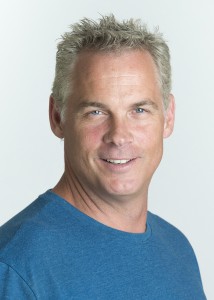

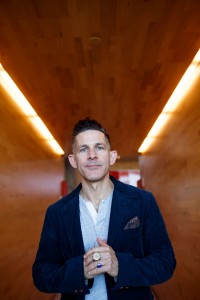
 “The book is very much about defending a queer identity that is both personally and socially queer,” Pousson continued. “It’s about a teenager who pushes against assimilation and conformity and remains an individual, which is also a fight for the Cajun culture and all people who are outsiders. That’s why this award nomination from PEN is so meaningful. It’s an organization that has always stood for and defended those on the outside.”
“The book is very much about defending a queer identity that is both personally and socially queer,” Pousson continued. “It’s about a teenager who pushes against assimilation and conformity and remains an individual, which is also a fight for the Cajun culture and all people who are outsiders. That’s why this award nomination from PEN is so meaningful. It’s an organization that has always stood for and defended those on the outside.”